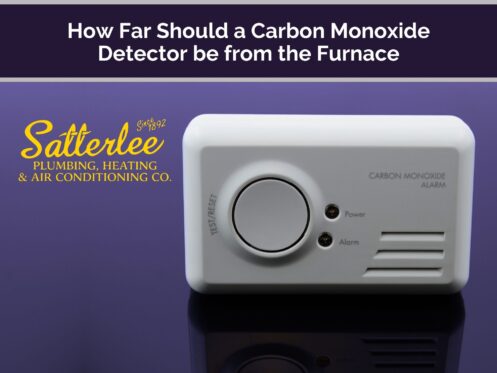Carbon monoxide (CO) is a dangerous gas that is virtually undetectable by human senses. It is produced by the incomplete burning of fuels such as coal, wood, oil, and gas. This makes it particularly concerning for those who own and operate furnaces, as these devices use gas or oil as fuel sources. To safeguard against carbon monoxide poisoning, it is crucial to have a carbon monoxide detector installed near your furnace.
General Guidelines
The placement of a carbon monoxide detector is critical to ensuring its effectiveness in detecting the presence of this deadly gas. Many experts recommend installing a carbon monoxide detector within 15 feet of any fuel-burning appliances, such as:
- furnaces
- water heaters
- fireplaces.
This proximity ensures that the detector can quickly identify and alert occupants to the presence of carbon monoxide before it reaches dangerous levels. However, it is important to note that the exact distance at which a carbon monoxide detector should be placed from a furnace can vary. This is due to being based on factors like the layout of your home and the presence of any barriers that may impede the flow of gas. Local building codes and regulations may also have specific requirements regarding the installation and placement of carbon monoxide detectors.
To determine the appropriate distance between a carbon monoxide detector and a furnace, it is advisable to consult the manufacturer’s guidelines for both the detector and the furnace itself. These guidelines will provide specific instructions and recommendations to ensure maximum safety.
In general, it is best to install a carbon monoxide detector around 5 feet above the floor level. This positioning allows for effective detection since carbon monoxide is slightly lighter than air and will tend to rise. Additionally, ensure that the detector location is away from any direct airflow that may occur near the furnace. Furthermore, in addition to the main detector, it’s also a good idea to have a carbon monoxide detector installed within the bedrooms for extra security.
Carbon Monoxide Detector Testing
It is essential to regularly test and maintain your carbon monoxide detectors to guarantee their proper functioning. This includes periodic battery replacement, testing the alarms, and cleaning the detectors to prevent dust or other contaminants from affecting their performance. Many detectors also have a limited lifespan. Following the indications by the manufacturer, they will need replacements after a certain number of years.
Routine Maintenance
While installing carbon monoxide detectors is vital to protect your household, it’s equally important to take other preventative measures. Routine maintenance of your fuel-burning appliances, like furnaces and water heaters, is crucial to ensure their efficient and safe operation. Additionally, regular inspections by certified professionals can identify and rectify any potential leaks or issues before they become hazardous.
In essence, the placement of carbon monoxide detectors near furnaces is critical to protect against this dangerous gas. While there are general recommendations for the distance between the detector and the furnace, it is crucial to consult the manufacturer’s guidelines and any local regulations to ensure proper installation. Regular maintenance and testing of both the detectors and fuel-burning appliances are essential. In doing so, you and your loved ones will create a safe living environment. Remember, carbon monoxide is a silent and deadly threat. However, with the right precautions and awareness, its risks can be minimized or even eliminated. If you have any questions about the safety of your HVAC system, reach out to Satterlee today. We are happy to share our knowledge with our local four-state area to help them feel safe in their homes.


